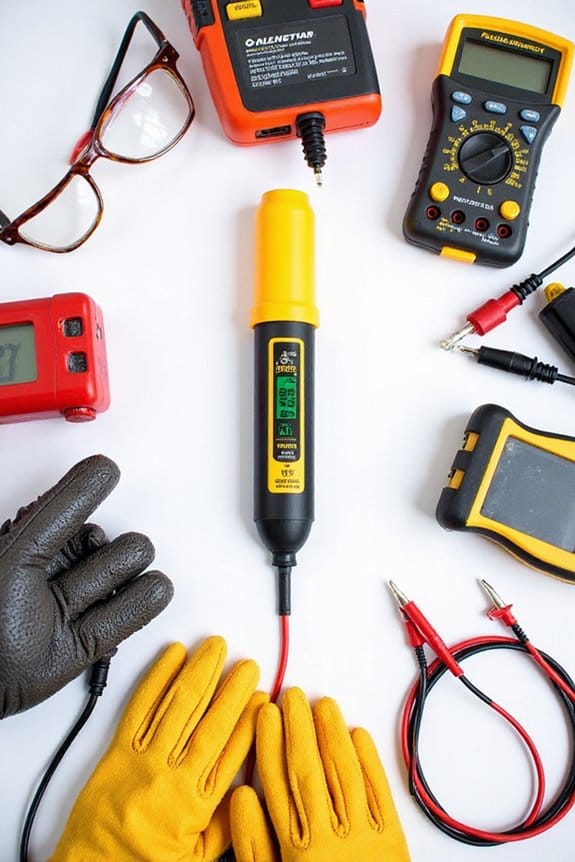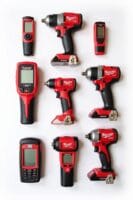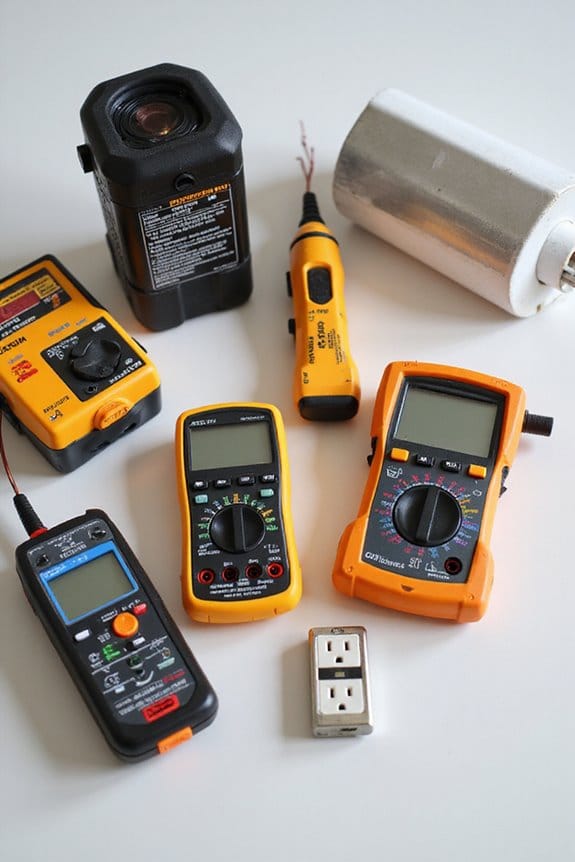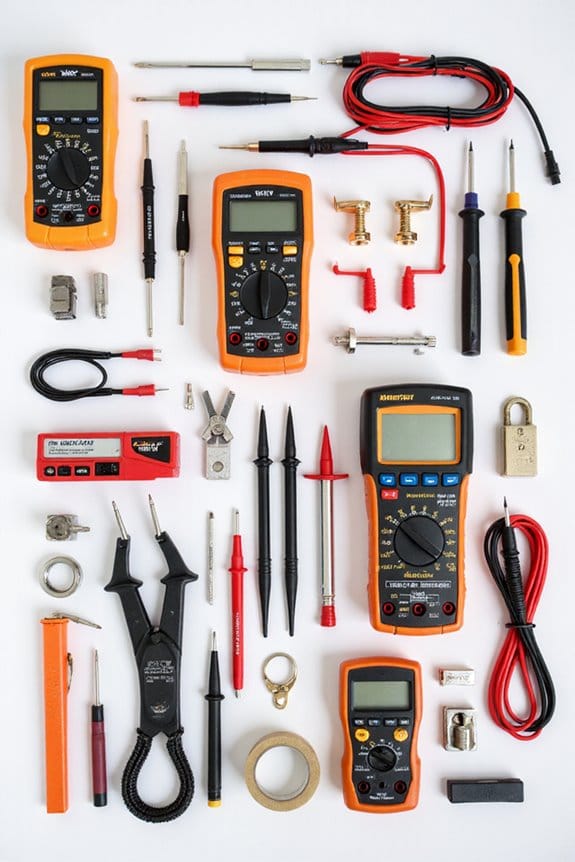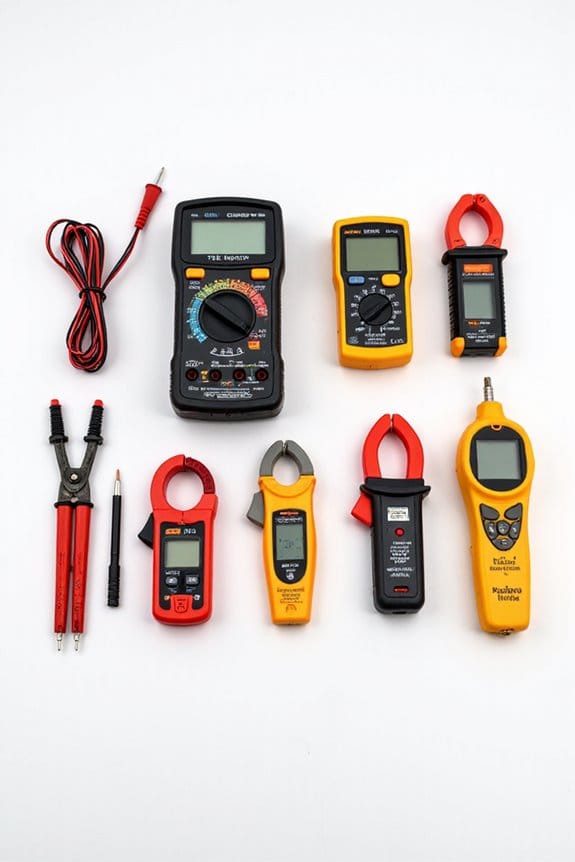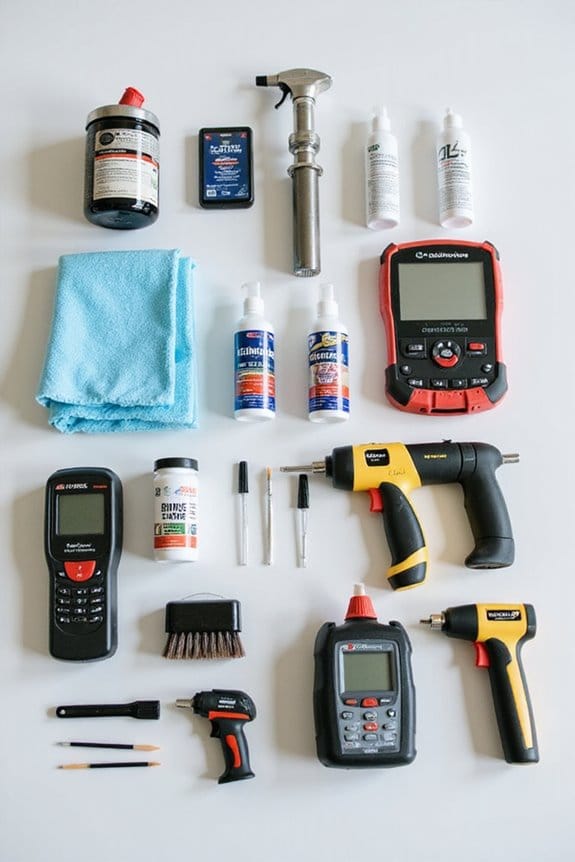A non-contact voltage tester (NCVT) is a nifty tool that helps you detect electrical voltage without touching any wires. Here’s what you need to know: 1) They enhance safety by avoiding shocks. 2) They work through capacitive coupling. 3) Many have visual and audible alerts for voltage detection. Just remember to test on a known live circuit first! If you want to learn more about how to use one and its benefits, stick around!
Key Takeaways
- A non-contact voltage tester (NCVT) detects voltage without direct contact, enhancing safety during electrical work.
- NCVTs use capacitive coupling to sense electric fields and indicate voltage presence.
- They typically detect voltages ranging from 50 to 1000 volts AC, with some advanced models detecting as low as 12 volts.
- Visual and audible indicators alert users to the presence of voltage, ensuring quick and effective safety checks.
- While user-friendly, NCVTs can produce false readings and should be confirmed with a multimeter for accuracy.
Definition and Purpose of Non-contact Voltage Testers
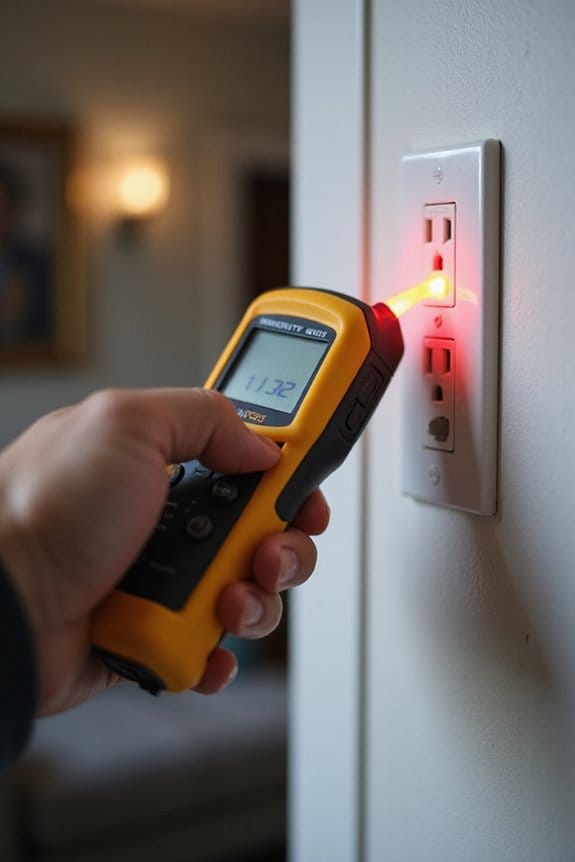
When it comes to working with electricity, safety is key, and that’s where non-contact voltage testers (NCVTs) shine. These handy tools detect voltage without touching wires, making them essential for anyone involved in electrical inspections. Here’s what you need to know:
- Safety Protocols: NCVTs help you avoid accidental shocks by sensing voltage through insulation. No direct contact means less risk!
- Preliminary Checks: Before diving into any electrical work, it’s smart to verify the presence of voltage. NCVTs provide that quick safety check.
- Ideal for Troubleshooting: They’re perfect for electricians and homeowners alike, ensuring you can identify live conductors without exposing bare wires. Additionally, many models include multiple buzzer modes for different voltage ranges, enhancing their functionality and user experience.
Operating Principle of NCVTs
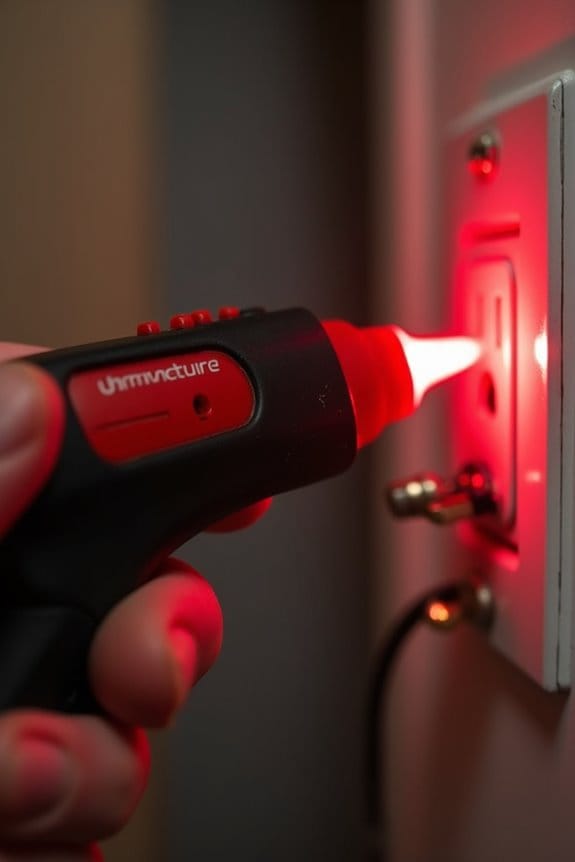
Non-contact voltage testers (NCVTs) operate on fascinating principles that make them a go-to tool for anyone working with electricity. Here’s how they work:
- Capacitive Coupling: The sensor acts like one plate of a capacitor, while the conductor is the other. The air between them serves as insulation. This setup allows them to detect the electric field from a live wire.
- Electrostatic Induction: When you bring the tester near a live conductor, it induces a tiny charge. The device amplifies this charge, triggering an indicator.
- Proximity Matters: The closer you get to the wire, the stronger the signal. So, if you’re trying to impress your friends, stay close! Additionally, these testers are designed with safety compliance ratings that ensure reliable and safe usage during electrical inspections.
Features and Indicators of NCVTs
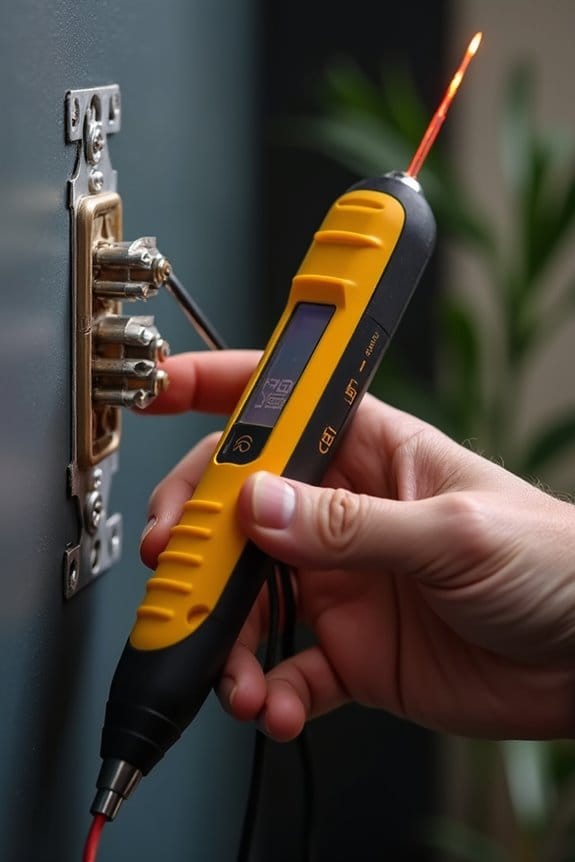
A reliable non-contact voltage tester (NCVT) can make all the difference when you’re checking for live wires. Here are some key features and indicators that I find essential:
- Visual Indicators: Most NCVTs use LED lights. A steady red light means voltage is present, while a green light indicates safety. Some models even flash colors for extra clarity!
- Audible Alerts: You’ll hear a continuous tone when voltage is detected. If there’s no sound, you’re in the clear. This feature is handy in noisy areas.
- Sensitivity Range: Commonly, NCVTs detect voltages between 50 to 1000 volts AC. Some advanced models can even sense as low as 12 volts.
Additionally, many NCVTs are rated CAT IV 1000V, ensuring safety in electrical environments while using the device. With these features, testing becomes not just safe but also straightforward—no more guessing!
Usage Guidelines for Non-contact Voltage Testers
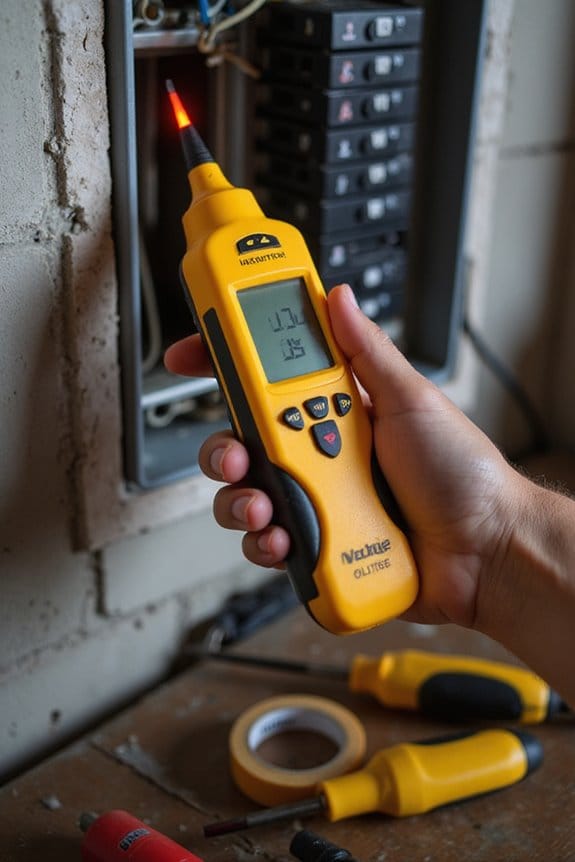
Using a non-contact voltage tester (NCVT) can be a game changer when working with electrical circuits, but it’s important to know how to use it effectively. Here are some usage guidelines:
- Verify Functionality: Always test your NCVT on a known live circuit first. This guarantees it’s working properly.
- Safety Measures: Hold the tester by its insulated handle, and avoid using it in wet conditions. Power off circuits when possible.
- Testing Techniques: Use the NCVT for quick voltage detection, but confirm results with a multimeter for accuracy.
- Confirm De-energization: If the NCVT shows no voltage, double-check with a contact tester before starting work.
- Maintenance: Regularly inspect and store your NCVT properly to keep it in good shape. Additionally, ensure that your NCVT has non-contact voltage detection features, as they enhance safety while identifying live wires.
Stay safe, and happy testing!
Advantages of Using NCVTs
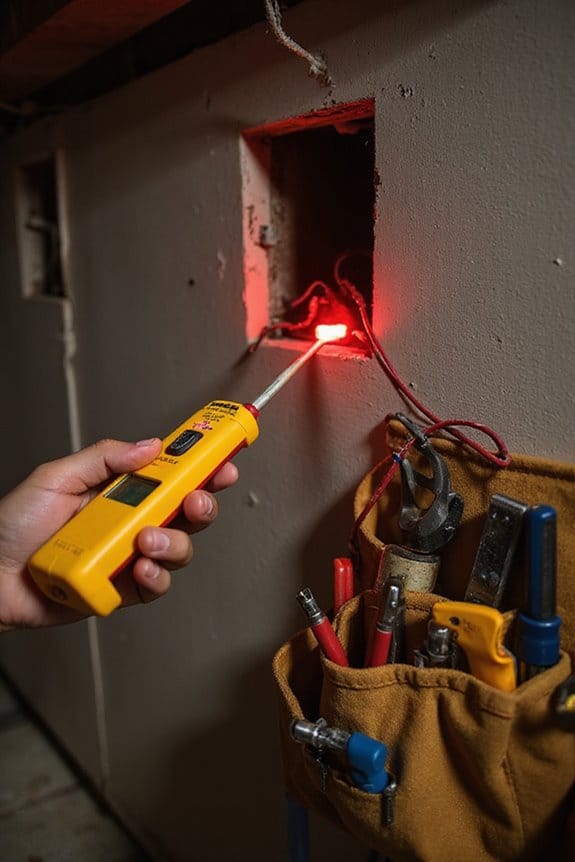
When you’re working with electricity, having a reliable tool can make all the difference. Here are some advantages of using Non-contact Voltage Testers (NCVTs):
- Safety Enhancements: They eliminate the risk of electric shock by detecting voltage without direct contact. Many models have over-voltage warnings and automatic shutdown features for added safety.
- Portable Design: Their compact, pen-style format makes them easy to carry in pockets or toolboxes. You can quickly whip one out for fast voltage checks, no need to disconnect power or strip wires.
- User-Friendly: NCVTs are straightforward to use. Whether you’re a beginner or a pro, their audible and visual alerts make it easy to detect voltage, even in noisy environments. Additionally, they often feature integrated LED flashlights that assist in low-light conditions, further enhancing usability.
Limitations and Considerations of NCVTs
While Non-contact Voltage Testers (NCVTs) offer significant advantages, it’s important to recognize their limitations and considerations. Here are a few key points:
- False Readings: NCVTs can pick up phantom voltages, leading to misleading indications. You might think a wire is live when it’s not!
- Voltage Limitations: They don’t measure actual voltage levels, so you won’t know if it’s 120 V or 240 V.
- User and Environmental Factors: Your positioning and surrounding electromagnetic noise can affect readings.
- Complementary Tools: Always use NCVTs alongside multimeters for a more accurate assessment.
In short, while NCVTs are handy for quick checks, don’t rely on them solely. They’re not foolproof, and safety is key!
Frequently Asked Questions
Can Non-Contact Voltage Testers Be Used on Live Circuits?
Absolutely, I use non-contact voltage testers on live circuits for safety. They’re great for quick checks, but I always verify their accuracy and follow safety protocols to guarantee I’m working safely and effectively.
How Do I Maintain My Non-Contact Voltage Tester?
To maintain my non-contact voltage tester, I prioritize battery replacement and regular tester calibration. I always replace batteries promptly, guaranteeing peak performance, and I regularly check its functionality to verify accuracy and reliability during use.
Are There Different Types of NCVTS Available?
Absolutely, there are different NCVT types available. I often choose between digital NCVT types for precise readings and analog NCVT options for straightforward use. Each serves unique needs in electrical testing, making my work easier.
What Safety Certifications Should I Look for in an NCVT?
When I choose tools, I see them as shields against danger. I always look for safety standards and certification labels, ensuring my non-contact voltage tester meets rigorous guidelines for reliable protection in electrical environments.
How Do I Know if My NCVT Is Functioning Properly?
To guarantee my NCVT’s functioning properly, I follow testing procedures like checking for visible signals and testing on known live sources. Consistent voltage accuracy is essential, so I cross-verify with a multimeter when necessary.

